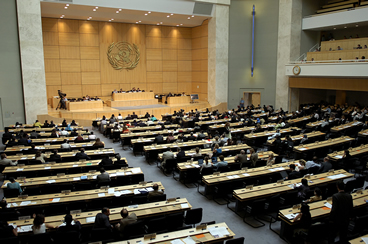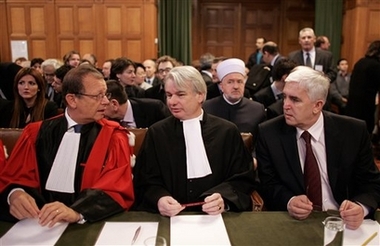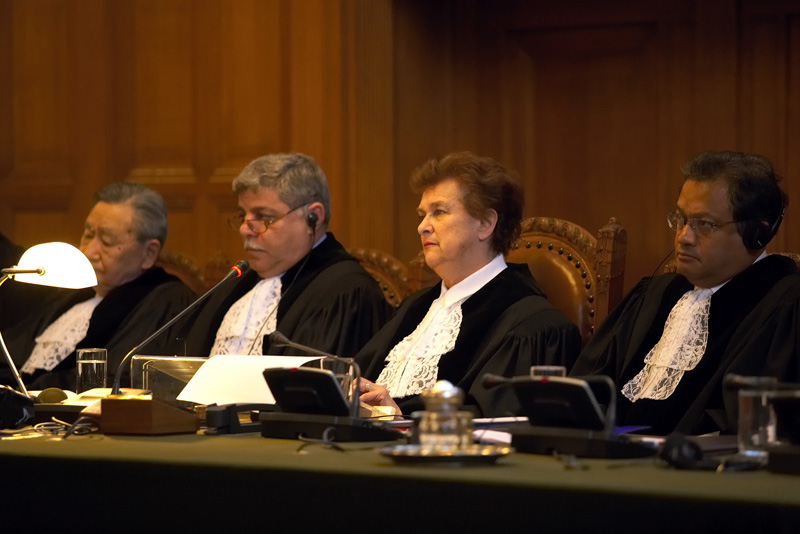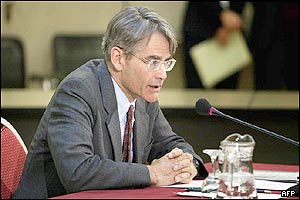By Otto Spijkers

Secretary-General Ban Ki-Moon addressed the young generation, represented by a group of students of the United Nations International School. He spoke to them about his own generation and said: "We are all complicit in the process of global warming. Unsustainable practices are deeply entrenched in our everyday lives. But in the absence of decisive measures, the true cost of our actions will be borne by succeeding generations, starting with yours." And then he pointed at the young students.
The South-Korean Secretary-General added: "Unfortunately, my generation has been somewhat careless in looking after our one and only planet. But I am hopeful that is finally changing. And I am also hopeful that your generation will prove far better stewards of our environment; in fact, looking around this hall today, I have a strong sense that you already are." I am not sure what the Secretary-General saw when he was looking around the United Nations General Assembly hall (where the conference took place), but what he saw seems to have comforted him. The International Strategy for Disaster Reduction created a simple computer game that will help the younger generation understand what to do in order to save the environment (it is called the Stop Disaster Game, and you can play the game here; each scenario takes between 10 and 20 minutes to play, depending on the disaster you are trying to prevent and your skill level).
I find this a bit troubling. First Ban Ki-Moon says that unfortunately the older generation was somewhat careless in looking after the environment, and then he tells the younger generation not to do the same. Al Gore uses a similar tactic. He tells the world that its behaviour patterns must change, but at the same time the Tennessee Center for Policy Research found out that Al Gore consumes more electricity every month than the average American household uses in an entire year. Al Gore does not seem to deny this, but he seems to say that he compensates this by campaigning for a healthier environment and by investing in clean energy. I think Al Gore’s documentary is extremely useful and I think he deserves his Oscar, but the problem remains.
I was thinking: can the younger generation not claim reparations from the older generation, in addition to being lectured on how not to make the same mistakes? Of course the young generation should do better than the previous generation.
The picture comes from the Living Sculptures Website. One can see Atlas who refuses to keep carrying the world on his shoulders.
 By Otto Spijkers
By Otto Spijkers

 "Serbia is guilty! It was genocide in Bosnia." That’s what was written on a banner hanging outside the Peace Palace, where the International Court of Justice delivered the judgment in the genocide case between Bosnia and Serbia this morning. And the banner was right. The Court indeed
"Serbia is guilty! It was genocide in Bosnia." That’s what was written on a banner hanging outside the Peace Palace, where the International Court of Justice delivered the judgment in the genocide case between Bosnia and Serbia this morning. And the banner was right. The Court indeed 
 By Otto Spijkers
By Otto Spijkers 



 The message conveyed by the various murals is one of faith, justice, intelligence, hope, solidarity, peace, and technical, scientific and social progress. But the paintings have a very ‘realist’ tone. On the painting about social progress one can find black slaves, about to be liberated. A white man, presumably Abraham Lincoln, oversees the whole thing. On the painting about peace, one can find five men and a bow of peace. One can also find two ‘realist’ paintings: one depicting the
The message conveyed by the various murals is one of faith, justice, intelligence, hope, solidarity, peace, and technical, scientific and social progress. But the paintings have a very ‘realist’ tone. On the painting about social progress one can find black slaves, about to be liberated. A white man, presumably Abraham Lincoln, oversees the whole thing. On the painting about peace, one can find five men and a bow of peace. One can also find two ‘realist’ paintings: one depicting the